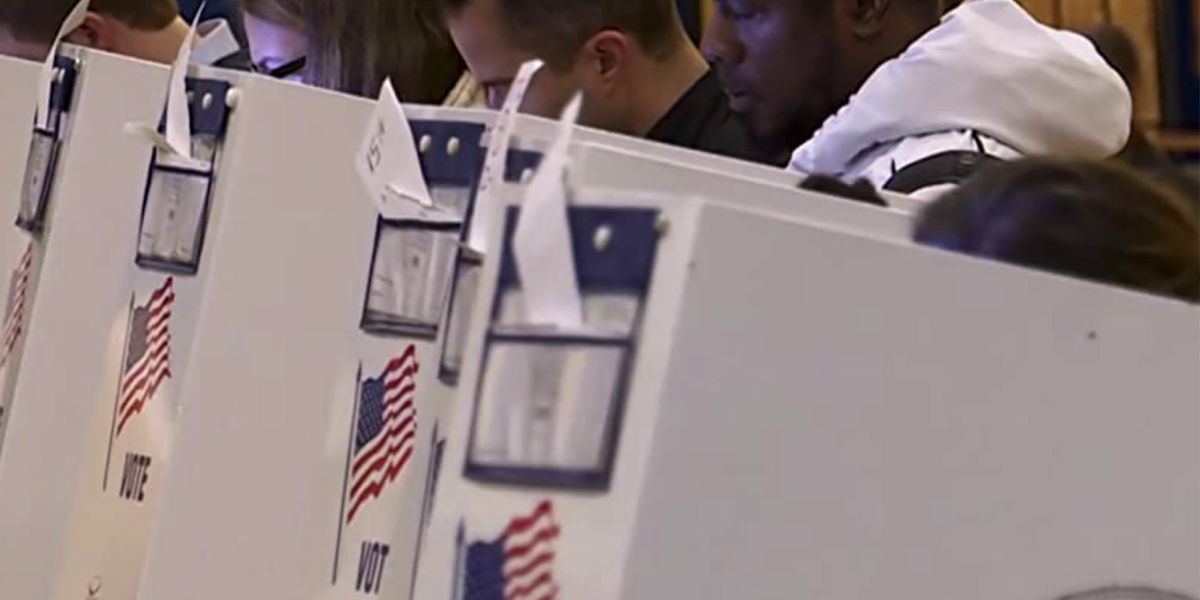There’s no mistaking where the political loyalties of the makers behind All In: The Fight for Democracy lie. The documentary is ostensibly about voter suppression, which has been used by different parties in different ways throughout American history. But in the year 2020, getting more Americans to the polls on Election Day inevitably involves running right through one party, which stands against expanding voter rights like so many Deep South sheriffs getting ready to test out their clubs on the heads of civil rights marchers. It’s the party with the elephant.
That was not always the case. As directors Lisa Cortes and Liz Garbus argue in their dramatic and informative recounting, keeping Americans from voting has a dishonorably long and lamentably bipartisan history. At the start of the nation, only about six percent of the population passed the qualifications deemed necessary to participate in elections (i.e., white male landowners). But Cortes and Garbus dispense rather too quickly with most of that history in order to bring voter suppression closer to the present day.
This is understandable, given that the star of the documentary is Stacey Abrams. The Democratic gubernatorial candidate for Georgia in 2018 who barely lost to Republic Brian Kemp, Abrams has since become a passionate advocate for voting rights. This was due in part to Georgia’s lamentable record of limiting access to the ballot box, a campaign of limiting democracy headed up by the secretary of state who was, in a fox-and-the-henhouse twist, candidate Brian Kemp.
Aside from providing some biographical details, Abrams is less present for the earlier stretches of the documentary. Instead, a clutch of historians, politicians, and writers (Carol Anderson, Andrew Young, Ari Berman, Eric Foner) turn a specifically racial lens on the issue. They describe how every step forward in expanding the franchise to Black voters after the end of slavery was met by backlash and retrenchment. Rights granted to Black male citizens by the 15th Amendment were systematically stripped away by a variety of tools (mostly poll taxes and bogus literacy tests, often waived for white voters) passed by Confederate state Democratic legislatures. By the 1940s, barely three percent of Southern Blacks of voting age were registered.
All In illustrates with bright clarity the force that lay behind these laws with the story of Maceo Snipes. In 1946, Snipes, a World War II veteran and the only Black voter registered in his Georgia county, cast his vote in a primary election. He was shot dead the next day by a White man.
[IMDB / Photo by Courtesy of Amazon Studios/Courtesy of Amazon Studios – © Courtesy of Amazon Studios]
From there, All In moves straight to the civil rights movement, which seems today more remembered for its righteous stand against segregated public spaces than its just as righteous but less cinematic focus on giving Southern Blacks the right to vote without harassment or the threat of murder. A bridge to the present is provided by the section on the Voting Rights Act of 1965, which finally enshrined many protections for the franchise in several states that had most egregiously tried to violate them. (Including a couple, like Alaska and Arizona, that tried to keep minorities like Native Americans and Latinos from voting). Although the decades that followed were marked by general bipartisan agreement on voting rights, following Barack Obama’s 2008 election, Republican state legislatures began surgically targeting his coalition of voters with gerrymandering and suppression tactics.
In a section that will make at least a few viewers somewhat ill, the film describes how the 2013 Supreme Court decision in Shelby County vs. Holder stripped protections away in large part because of Chief Justice John Roberts. Roberts is protégé of William Rehnquist who, in the 1960s took part in minority voter intimidation efforts in Arizona. Almost immediately, states like Texas began enacting restrictions like voter ID laws whose quirks (gun permits were acceptable, student IDs were not) seemed surgically designed to favor one group of voters over another.
Because Republican state officials kept claiming the measures were to combat voter fraud, since that had been proven time and again to be almost nonexistent, the campaign of making it harder for certain groups to vote was so familiar in its intent that Anderson calls it “Jim Crow 2.0.” By the time Kemp was purging hundreds of thousands of disproportionately Black voters from the rolls in Georgia before the 2018 election, the brutally partisan power grab was almost old hat, given the lack of strong available legal countermeasures.
Against this depressing backdrop, Abrams serves as something of a tonic. A stirring and almost impossibly upbeat presence, she has a clarion voice and sharp precision that cannot help but end the film on an uplifting note. She and the filmmakers work hard to make this documentary more than a grim litany of defeats. While they cannot quite make the final product a non-partisan document, that’s not exactly their fault. It’s one party, after all, that has decided that the way to victory is making sure that fewer and fewer people can their vote. At times, it seems to be working.
In the clip that Cortes and Garbus include of her acknowledging that Kemp will be the next governor of Georgia, Abrams says, “This is not a speech of concession … I cannot concede.” It sounds less like an acknowledgement of defeat than a battle cry pointing to the future.
* * *
All In: The Fight for Democracy is available in the US on Amazon Prime.



